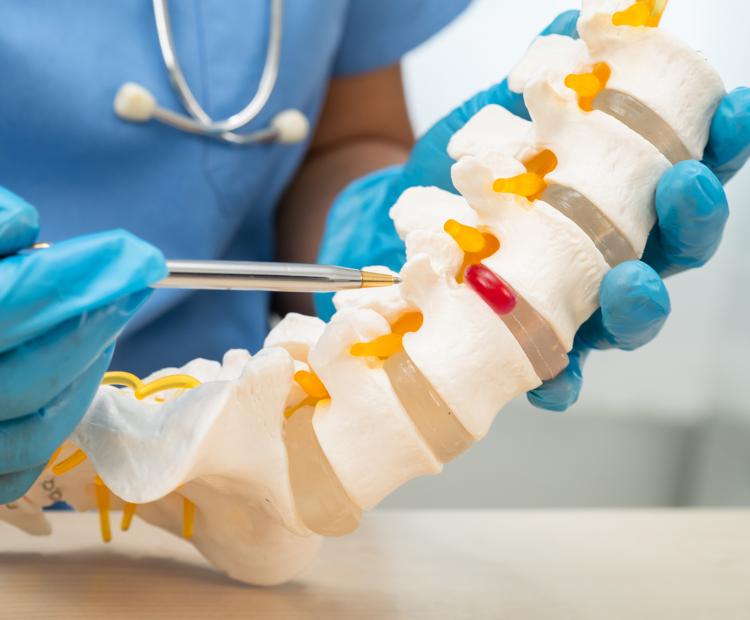Understanding Spondylolisthesis: Causes and Treatment Options
Chronic back pain is often diagnosed as spondylolisthesis, a condition that tends to occur more frequently in older adults. Understanding how spondylolisthesis is caused and the available treatments makes it easier to choose the best treatment.
What is Spondylolisthesis?
Spondylolisthesis occurs when a vertebra in the spine slips out of place, putting pressure on the vertebra below it and the spinal cord. Since the spinal column houses numerous nerve endings, this added pressure often leads to back pain.
The spine is built to move freely while keeping the vertebrae properly aligned. However, spondylolisthesis can disrupt this balance, causing pain that limits movement. This condition is most commonly found in the lower (lumbar) section of the spine.
Understanding Spondylolisthesis
Understanding spondylolisthesis’s causes, symptoms, and treatment options can be empowering. With the right care, it’s possible to manage pain and regain the ability to enjoy activities without the limitations this condition can bring.
Causes and Risk Factors
Spondylolisthesis can develop for a variety of reasons. However, certain risk factors make it more likely. These include being assigned female at birth, being over age 50, participating in athletics, or having a family history of spondylolisthesis or other bone disorders. While anyone can experience this condition, these factors increase the likelihood.
The most common causes of spondylolisthesis include:
- Aging and wear and tear that happens over time, including arthritis
- Sports-related injuries
- Traumatic injuries, such as auto accidents
- Having vertebrae that are thinner than normal
- Growth spurts in younger people
Symptoms of Spondylolisthesis
The symptoms of spondylolisthesis can vary from person to person, depending on the location of the slipped vertebra. Some common symptoms include:
- Lower back pain that doesn’t go away on its own
- Pain that radiates to the thighs or buttocks
- Difficulty walking, moving, or standing upright
- Leg pain, numbness, or tingling
- Weakness
- Loss of bladder or bowel control (in severe cases)
Diagnosing Spondylolisthesis
Depending on the cause of spondylolisthesis, there are a few subtypes that a healthcare professional can diagnose:
- Isthmic spondylolisthesis: In this subtype, repeated stress on the spine can cause a fracture in the pars interarticularis, the vertebra area connecting the upper and lower facet joints.
- Degenerative spondylolisthesis: This subtype is more commonly seen in older adults and is caused by wear and tear on the spine over time.
- Traumatic spondylolisthesis: This subtype is caused by injury to the spine, such as a fall or other significant trauma.
To diagnose spondylolisthesis, a healthcare provider will review medical history, perform a physical exam, and order imaging tests like X-rays, CT scans, or MRIs. These images help confirm the condition and rule out other possible causes.
Grading Spondylolisthesis
Once spondylolisthesis is diagnosed, a healthcare provider can determine the severity or grade of spondylolisthesis to help guide treatment decisions. There are five grades:
- Grade I: 1-25% disc slippage
- Grade II: Up to 50% disc slippage
- Grade III: Up to 75% disc slippage
- Grade IV: 76-100% disc slippage
- Grade V: More than 100% slippage
Treatment Options for Spondylolisthesis
Treatment for spondylolisthesis focuses on relieving symptoms, strengthening the spine, and improving overall function. Not everyone with spondylolisthesis requires surgery. In fact, many people find significant relief through non-surgical options.
Non-Surgical Treatment Options
Many people with spondylolisthesis find that non-surgical treatments improve their pain and function. These treatments include:
- Physical therapy: Targeted exercises can strengthen the muscles that support the spine and improve flexibility.
- Bracing: Wearing a back brace may help stabilize the spine, especially if there is a fracture.
- Medications: Over-the-counter pain relievers or prescription medications may help reduce inflammation and control pain.
- Epidural steroid injections: These injections reduce swelling and inflammation around the nerves, providing pain relief.
Surgical Treatment Options
If non-surgical treatments do not provide relief, surgery may be recommended. Surgery aims to decompress nerves and stabilize the affected vertebrae. Common procedures include:
- Spinal fusion: This procedure involves joining two or more vertebrae to prevent movement between them and reduce pain.
- Decompression surgery: This removes bone or tissue pressing on the spinal nerves.
- Minimally invasive spine surgery: Newer techniques allow surgeons to stabilize the spine through smaller incisions, resulting in faster recovery times.
A healthcare provider will help determine the best surgical option depending on the location and severity of the vertebral slippage and the individual's overall health.
Summary
Spondylolisthesis can cause significant back pain and affect daily activities. Fortunately, many treatments are available to manage symptoms and improve quality of life. With the right care plan, people with spondylolisthesis can often regain strength, reduce pain, and return to activities they enjoy.
If you are experiencing persistent back pain, we can help. Our team of pain specialists at Advanced Spine and Pain will work with you to find the most effective treatment options. Contact us today or call (480) 573-0130 to schedule an appointment.

